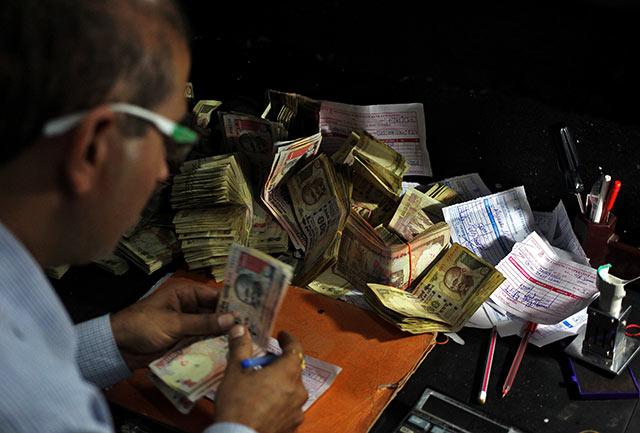One of the stated objectives behind the government’s move to demonetise Rs 500 and Rs 1,000 currency notes has been the goal that India should move towards a cashless economy.
Ever since Prime Minister Narendra Modi’s unexpected 8 November announcement that effectively sucked 86%
of the value of currency in circulation out of the system, the government, the Reserve Bank of India, Public Sector Banks and private e-wallet companies like Paytm, FreeCharge and MobiKwik have been hard selling the concept of a cashless
economy to people at large.
On Friday, finance minister Arun Jaitley said that after demonetisation, India will have “significantly less†paper currency in circulation. "One of the advantages of this exercise will be that there won't be the same level of
paper currency as there was on November 8," NDTV news channel cited Jaitley as saying. "The volume of formal trade, volume of business will grow but paper currency will shrink."
While the implication of Jaitley’s statement would be that India will leapfrog into the cashless era, it may not happen soon.
Low penetration of smartphones: Although more than one billion Indians already use a mobile phone, a February survey by the Pew Research Centre said that smartphone penetration in India was only 17%. Moreover, about 22% of Indian adults use the Internet just occasionally. Having said that, as per a February report by Counterpoint Research, smartphone shipments to India grew 23% to 100 million units during calendar year 2015. So, although smartphone penetration is growing, and average prices are coming down, it will take several years before smartphone usage becomes a universal phenomenon in India.
Low literacy and awareness levels: With an average literacy rate of 74%, a fourth of India still cannot read and write, even though literacy levels vary widely across states. Surely expecting this segment of population to use a smartphone or an ATM is a faraway dream. A 2015 survey by the Internet and Mobile Association of India said that almost a fifth of urban Indians and three quarter of rural Indians were simply not aware of the Internet.
Lack of supporting infrastructure: As an October VCCircle report noted, a country as big as India has less than 15 lakh point of sale (PoS) terminals, which facilitate credit and debit card payments. This, even as India has more than 71 crore debit card and 2.6 crore credit card users. A 30 November column in the Hindustan Times said that as of 2014, there were only 18 ATMs and 13 commercial bank branches for every one lakh people. Of these, the report said only 18% of ATMs are deployed in rural India. To be sure though, India has opened more than 25 crore zero balance Jan Dhan accounts, but 23% of these were empty before 8 November. In fact, news reports suggest that a significant number of these accounts may have been used to launder money, prompting the government to cap withdrawals to Rs 10,000 a month. So clearly, even when people have a bank account, they have thus far been reluctant to use them.
No laws to protect people against fraud: India lacks robust laws to effectively come to consumers’ aid, if they were to lose money as a result of online fraud. Although the country does have a functioning Information Technology Act, there are no specific laws that deal with digital payments conducted via mobile wallets and such devices. Moreover, companies that promote such wallets are classified as Non Banking Financial Companies, which technically brings them under the ambit of the Reserve Bank of India. The government will therefore have to streamline regulations so as to guarantee an effective legal cover for such transactions.
Data blindspots and lack of availability of power: The one basic requirement for a society to go cashless is seamless, high speed data connectivity. India simply does not have enough fiber optic links, routers and public WiFi spots to allow users seamless high speed data connectivity across its cities and villages. Moreover, when it comes to
mobile networks there are gaping holes - gaps where there is just no connectivity because electricity is a huge problem in rural India. Further, according to the Pew survey, there is a wide gender gap between the number of men and women using the Internet, with only 17% women as compared to 27% men doing so. Affordability is another issue, although, with increased competition, especially in the 4G segment, data costs should head further south, going forward.
Like this report? Sign up for our daily newsletter to get our top reports.






